I get a ton of questions about increasing vertical jump and the right ways to train. It’s obvious that resistance training is an essential element, but for young athletes or those who can’t make it to the gym, I want to provide you with a body weight workout for vertical jump.
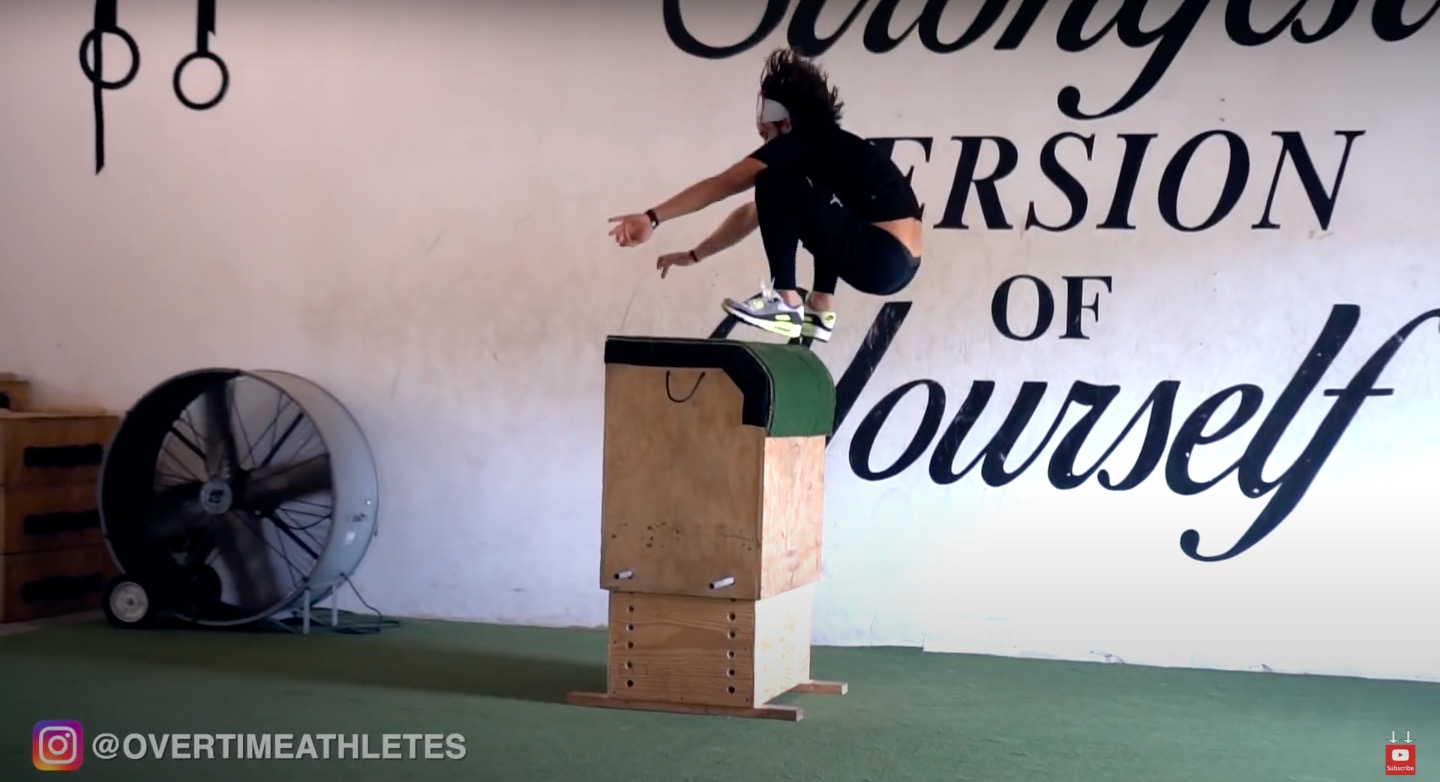
Think of this as a sample workout for anyone trying to increase their vertical jump. You might see something similar in my newest program Elite Vertical Academy.
While it’s not necessarily from any particular phase, I threw this together as a way to elevate someone’s potential using their bodyweight only.
Let’s get right into it.
BODY WEIGHT WORKOUT FOR VERTICAL JUMP
Since everything in this workout for vertical jump is using your body weight, think about avoiding just going through the motions. You should be completing every rep of every exercise at maximum effort and focus.
Be sure to begin with a dynamic warm-up to get loose and increase the temperature of your tissues. You can even add in this 5 minute hip activation routine for jumping and sprinting.
1. Pogo Jumps
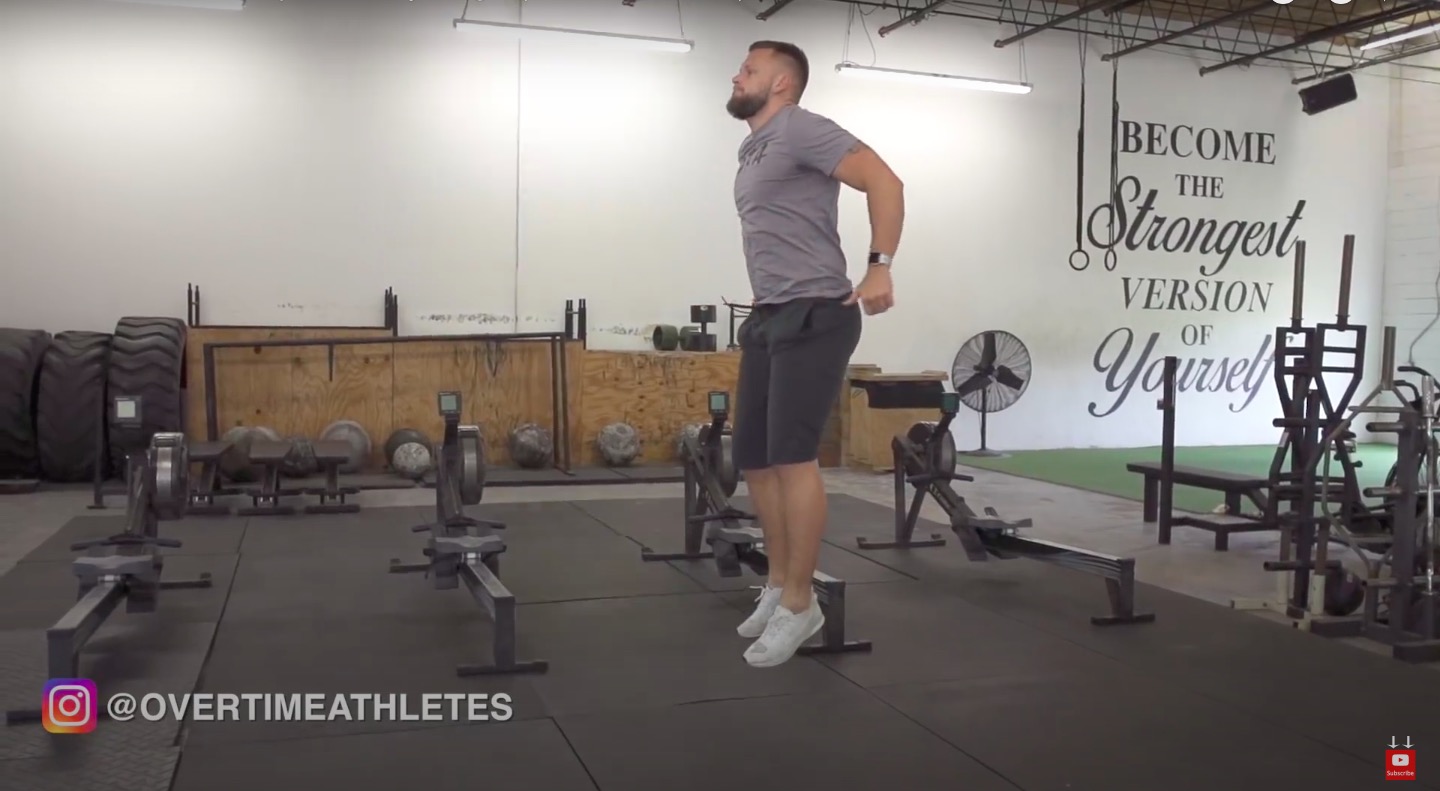
I always love to start off vertical jump training by activating the lower limb and engaging the foot/ankle complex. Pogo jumps are the perfect way to do this.
HOW TO: Keeping a soft but minimal bend in the knees, be sure to maintain flexion in the ankles. Using your arms for momentum, jump up for maximal height. Spend as little time as possible on the ground before exploding back up to your next jump. Think about speed and vertical power for these.
Perform 2 sets of 10 reps
2. Squat Jumps
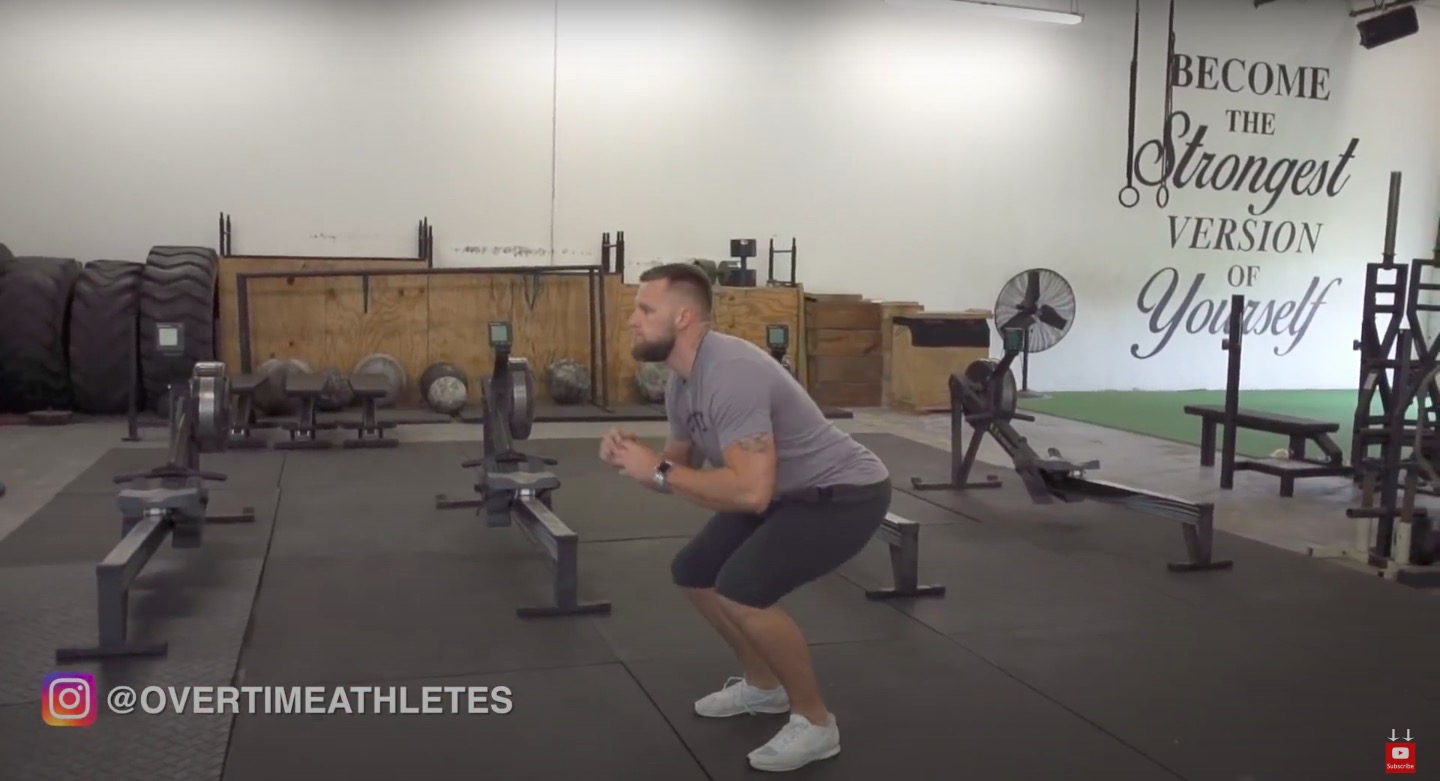

These are a great drill to get the hips activated and rapidly firing. Focus on pushing the hips back just as you would when performing your vertical jump.
HOW TO: Lower into a quarter squat position with the feet beneath the hips and toes facing forward. Pushing the hips back and using glutes, power up into a jump exploding off the ground. Land back into your same quarter squat.
Perform 2 sets of 10 reps
3. Alternating Lunge Jumps
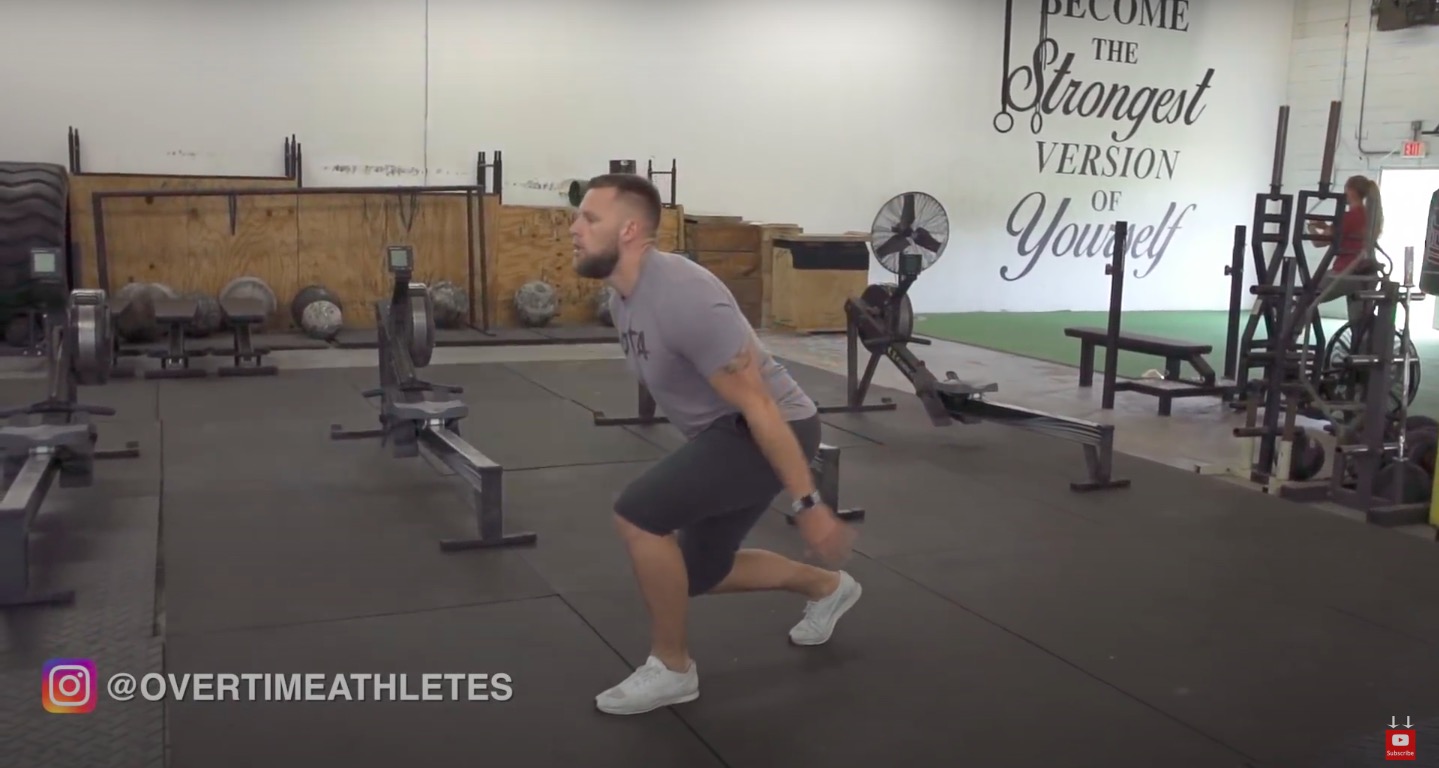
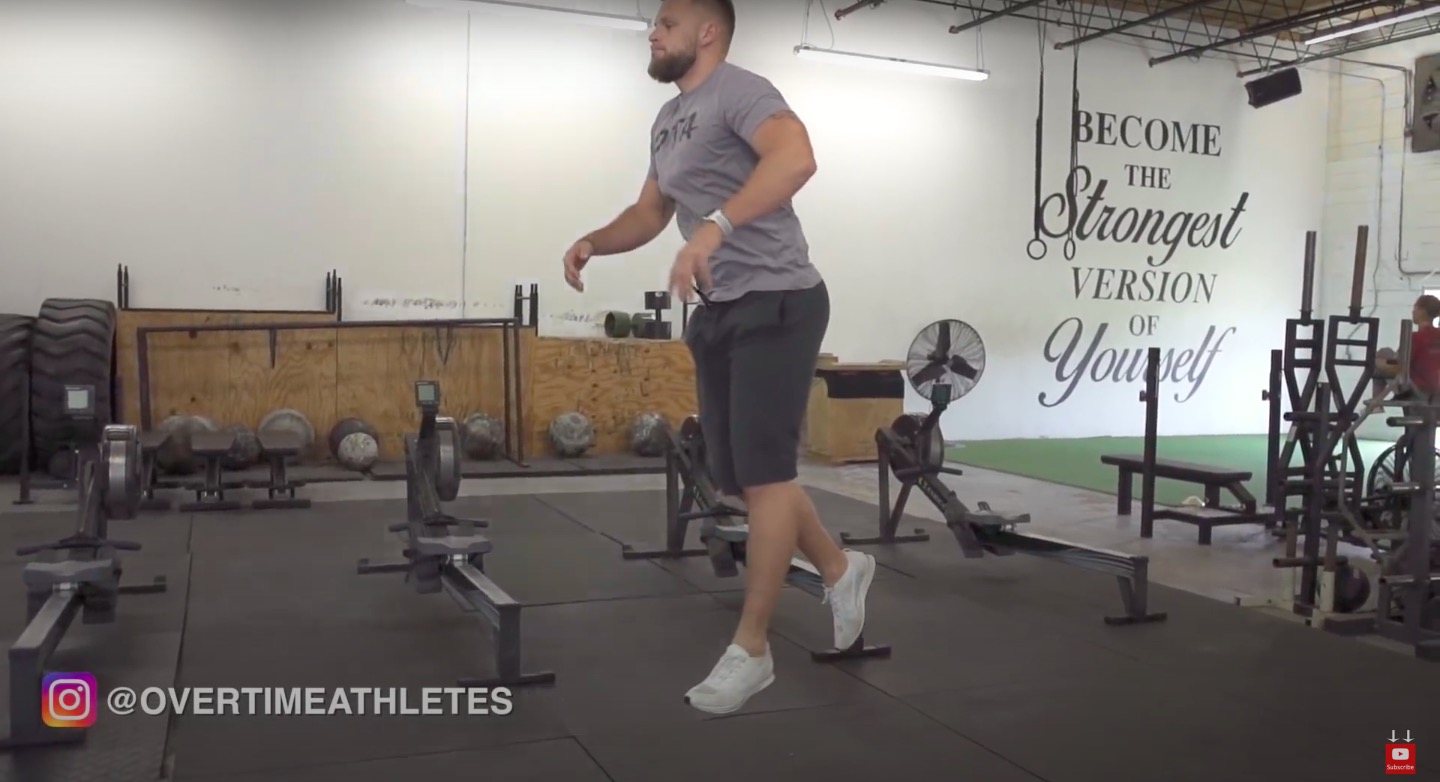
These work your hips at a slightly different angle and start engaging each leg on it’s own. I love lunge jumps because of how explosive they are.
HOW TO: Starting in a lunge position, you’ll drive your front foot into the ground and use the arms to propel you vertically. In mid-air you’ll switch legs to land in a lunge position with the opposite leg in front.
Perform 2 sets of 10 reps
4. Box Jump
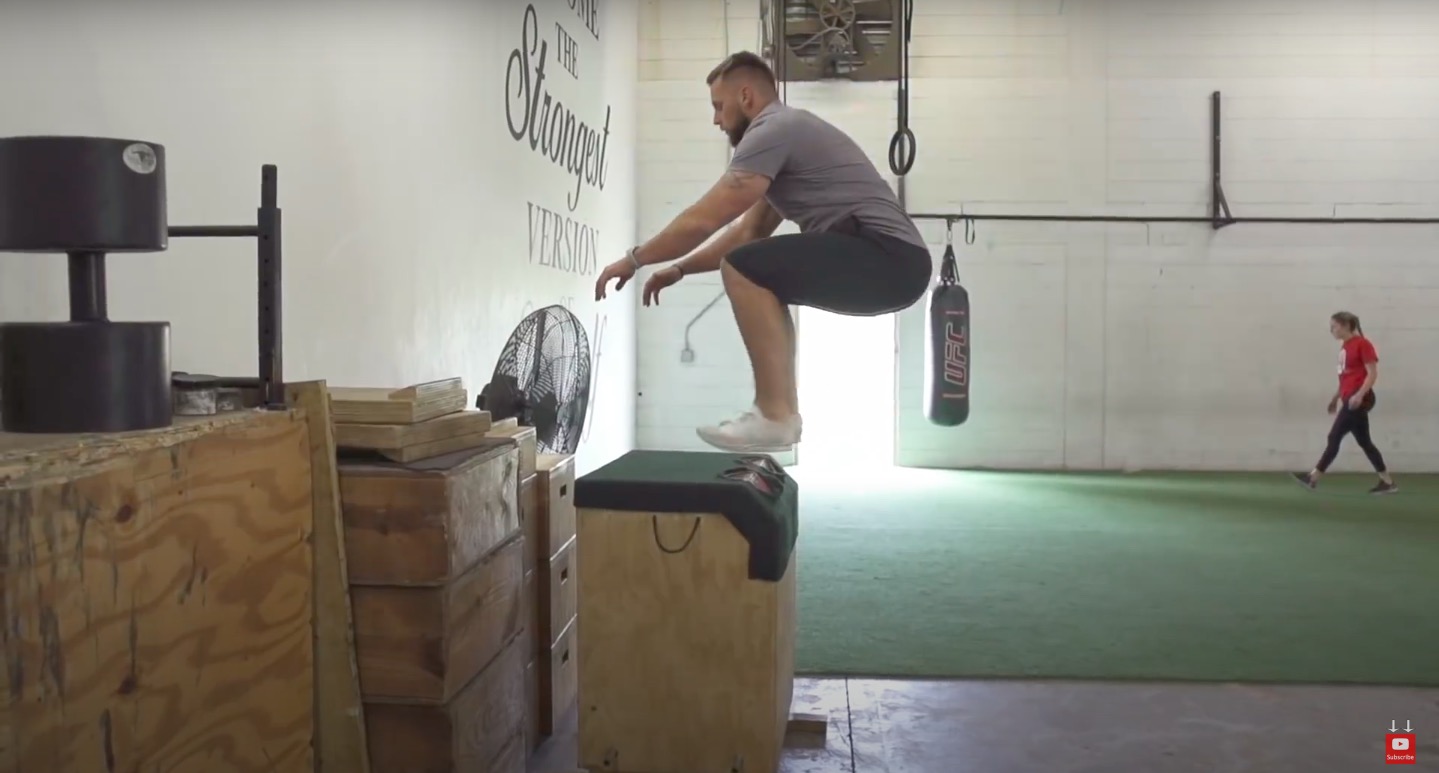
This is our first big, compound movement. You can utilize a few, different variations based on the equipment available to you. It could be something like a single leg box jump or a seated box jump.
We’re looking to recruit as many motor units as possible by going for major height and to begin simulating your vertical jump.
HOW TO: Begin standing in front of a plyo box. Push the hips back into a quarter squat and power up off the ground swinging your arms up to propel you. Land in a squat position on the box.
Perform 8 sets of 1 rep.
5. Squat
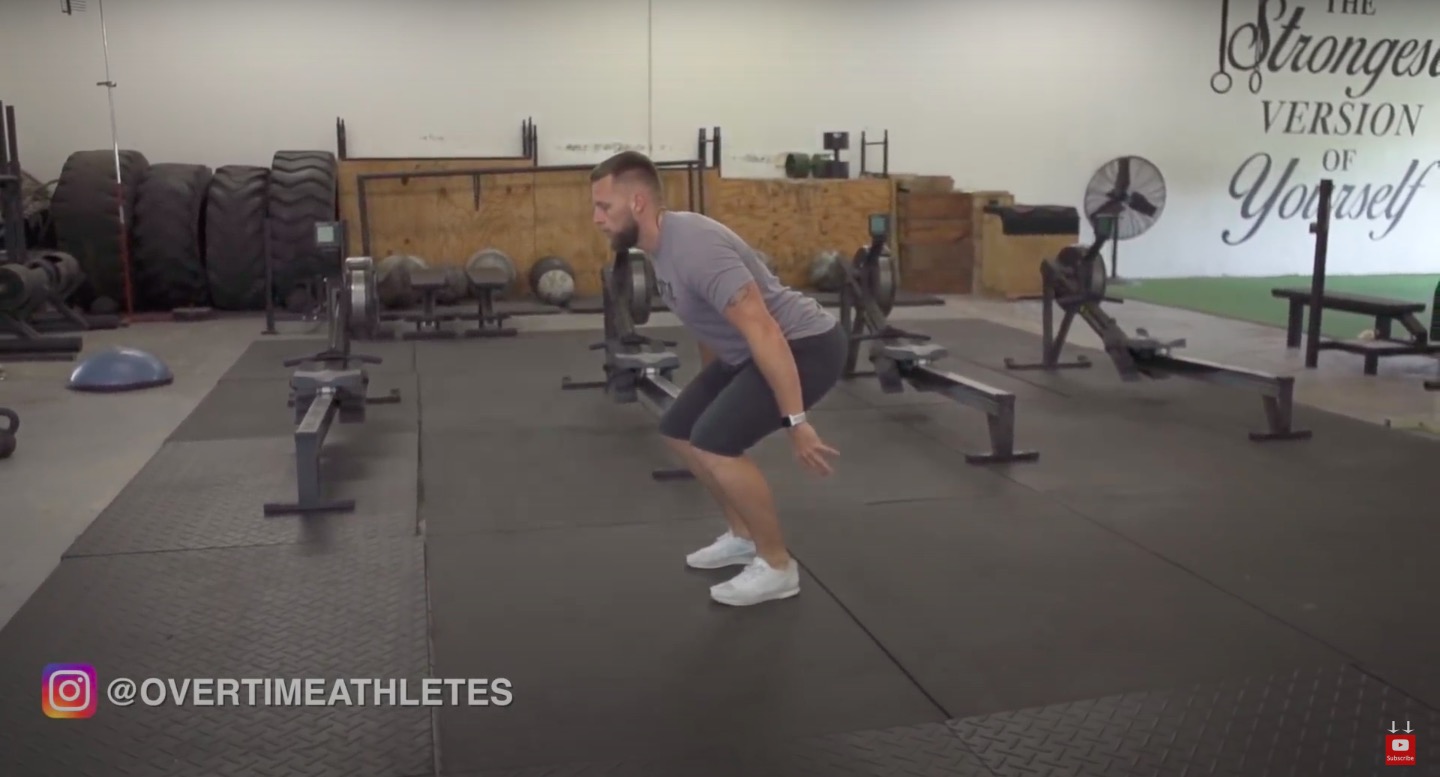
Now we’re starting to add in resistance, but using our own bodyweight.
Since this is only using your bodyweight, we’ll utilize a tempo to generate a greater stimulus within the muscles of the posterior chain.
When it comes to bodyweight training I prefer to use a fast eccentric phase, a pause at the bottom, and a fast concentric phase on the way up.
HOW TO: Begin with your feet directly under the hips with the toes facing forward. This mimics the exact position you take when performing a vertical jump. You’ll quickly lower down to the bottom, holding a quarter squat for three seconds. Then explode back up to your starting position.
Perform 3 sets of 6 reps
6. Wide Squat

For this one i’m taking a much wider stance with the toes pointing out (similar to a sumo position) so as to activate the glutes. You should look to hit a deeper range of motion to activate the posterior chain.
HOW TO: Begin with the feet outside of shoulder-width with toes toes pointing slightly out. Focus on a slow eccentric phase, coming into your lowest position for three seconds. Hit a one second pause at the bottom, and a quick one second tempo back to the top.
Perform 3 sets of 4 reps
7. Bulgarian Split Squats
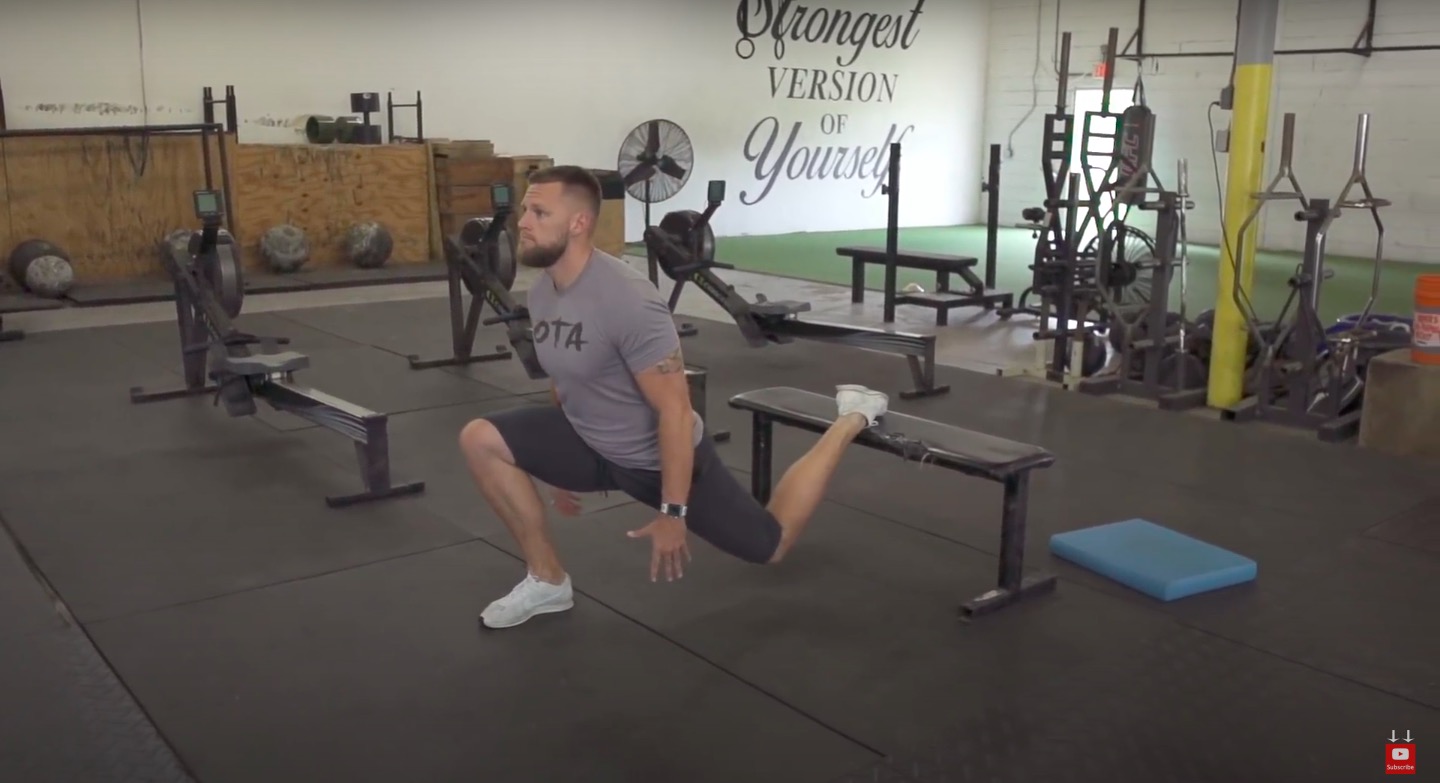
These are a tough exercise that offer a ton of benefits even if you’re just using bodyweight. This is one of the best drills for glute activation. Look for a full range of motion to focus on adding lots of volume to your workout.
HOW TO: Standing in front of a bench, place one foot out in front, and the other foot on the bench. Keeping the weight in the heel of your front foot, lower down bringing the knee just over the front toe. Drive up using your glutes.
Perform 3 sets of 10 reps on each leg.
8. Buddy Hamstring Curls

This is one of best workouts for targeting the hamstrings. We’re using tempo for this one as well, so that we can really activate and fire the muscles of the posterior chain.
One of my favorite aspects of this drill is how much it helps to strengthen and stabilize the knees. One way it does this is by training the point of peak torque for external rotation as you fire across the glute muscles.
HOW TO: Kneeling on a pad or mat, have a fellow athlete behind you to hold your feet down. Keeping the torso straight and the core engaged, you’ll begin to lower down for five seconds until you can no longer hold. Allow the hands to come to the floor and push yourself back up for the next rep.
Perform 3 sets of 3 reps with a five second eccentric phase.
9. Prone Cobra

This drill works the entire posterior chain. You want to think about activating everything down the back body by squeezing the glutes and the lower back, all the way to the upper back pulling the scapulae together.
This works to radiate the entire contraction throughout every muscle that helps you during a vertical jump.
HOW TO: Begin lying down in a prone position on your chest. Keep your eyes and palms towards the floor. From here, lift your chest, feet, and quads up off the ground squeezing your whole back body.
Perform 2 sets of 60 seconds
INCREASE VERTICAL JUMP
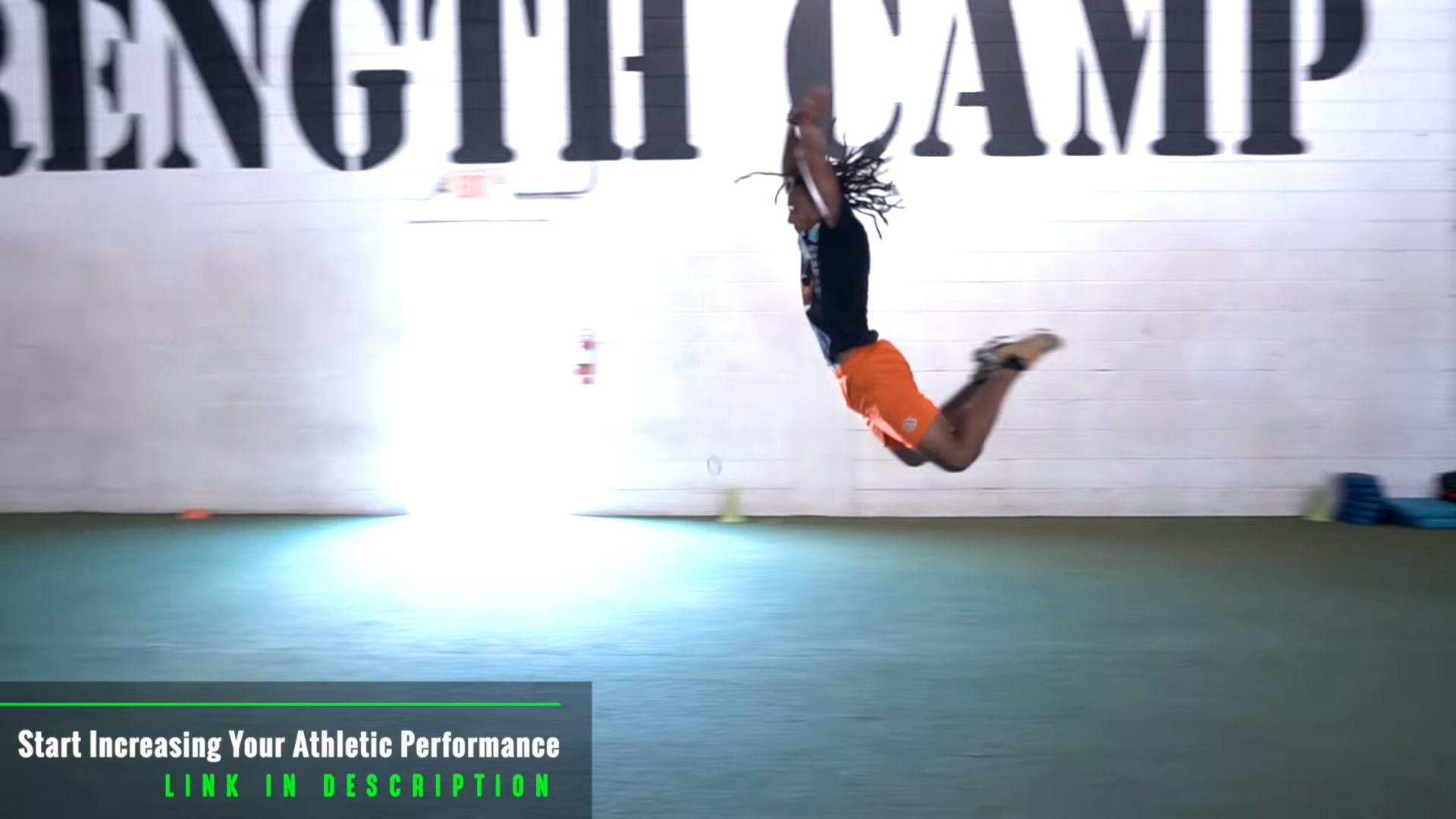
Like I said earlier, this is just a sample body weight workout for vertical jump that I’d prescribe someone to begin elevating their vert.
But any athlete knows that it takes more than just one workout to increase those hops and hit an elite level vertical.
In fact, it takes an entire program, with well-thought-out phases and and the right exercises at the right time.
If you truly want to increase your vertical jump, you need to check out the Elite Vertical Academy: a thorough guide with the proper programming to bring you elite level results.
Each phase and exercise has been specifically chosen, based off the best research out there and the incredible results my top level athletes are having.
Don’t just take my word for it…